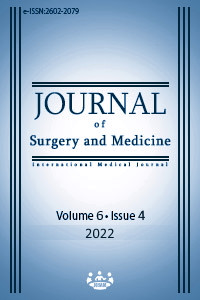New generation genome sequencing methods
Keywords:
DNA, Genome, New generation sequencing, Sequencing methodsAbstract
Sequencing procedures, which present information related to events in the living metabolism, are performed by genetic methods. Gene structure and genetic control mechanisms can be determined by sequencing methods, as they represent significant contributions to transcriptomic, ecological, and epidemiological studies. Thus, chromosomal abnormalities in living things with a whole genome analysis of different organisms (e.g., plants, bacteria, yeast, fungi, and viruses) are detected quickly, so that clinical disease can be diagnosed with reliable data from biomedical research. The nucleic acid sequencing processes have a history of about fifty years. With the technology developed in recent years, second and third-generation methods, known as next-generation sequencing (NGS), found their rightful place in the sector approximately 15 years ago. New-generation sequencing promotes inexpensive, routine, and comprehensive analyses of the living genome. In general, sequencing methods are separated as first-, second-, and third-generation sequencing methods, with the latter called ‘new-generation sequencing:’ our review focuses on these specific sequencing methods.
Downloads
References
Kizmaz MZ, Paylan İC, and Erkan S. Historical development of DNA sequencing. Gaziosmanpaşa University Gbad. 2017;6(2):47-53.
Darcan C, Türkyılmaz O. Overview of next generation sequencing technology. Bilecik Şeyh Edebali University J of Sci. 2018;5(1):41–9.
McCombie WR, McPherson JD, Mardis ER. Next generation sequencing technologies. Cold Spring Harb Perspect Med. 2019;9(11):a036798.
Ustek D, Abaci N, Sirma S, Cakiris A. New generation DNA sequencing. Experimed. 2011;1(1):11–8.
Akyol İ, Yildiz MA, Tutar E. Yeni nesil nükleotid dizileme metotlarının biyokimyasal temelleri. Tarim ve Doga Dergisi. 2017;20(1):1-15.
Liu L, Li Y, Li S, Hu N, He Y, Pong R, et al. Comparison of next-generation sequencing systems. J Biomed Biotechnol. 2012;2012:1-11. doi: 10.1155/2012/251364.
Kamps R, Brandão RD, Bosh BJ van den, Paulussen ADC, Xanthoulea S, Blok MJ, et al. Next-Generation sequencing in oncology : Genetic diagnosis, risk prediction and cancer classification. Int. J. Mol. Sci. 2017;18(2):308. doi: 10.3390/ijms18020308.
Dogan M, Eroz R, Yuce H, Ozmerdivenli R. The known about next-generation sequencing (NGS). Duzce Med J. 2017;19(1):27–30.
Kchouk M, Gibrat J, Elloumi M. Generations of sequencing technologies: from first to next generation. Biol Med. 2017;9(3):1-8. doi: 10.4172/0974-8369.1000395
Bruijns B, Tiggelaar R, Gardeniers H. Massively parallel sequencing techniques for forensics: a review. Electrophoresis. 2018;39(21):2642-54.
Kanagal-Shamanna R. Emulsion PCR. Techniques and Applications. Clinical applications of PCR. Humana Press, New York, NY. 2016;1392:33-42.
Verma V, Gupta A, Chaudhary VK. Emulsion PCR made easy. BioTechniques. 2020;69(1):64-9.
Callahan BJ, McMurdie PJ, Rosen MJ, Han AW, Johnson AJA, Holmes SP. DADA2: high-resolution sample inference from Illumina amplicon data. Nat Methods. 2016;13(7):581-3.
Melamede RJ. U.S. Patent No. 4,863,849. Washington, DC: U.S. Patent and Trademark Office. 1989
Luo C, Tsementzi D, Kyrpides N, Read T, Konstantinidis KT. Direct comparisons of Illumina vs. Roche 454 sequencing technologies on the same microbial community DNA sample. PloS One. 2012;7(2):1-12.
White RA, Callister SJ, Moore RJ, Baker ES, Jansson JK. The past, present and future of microbiome analyses. Nat Protocols. 2016;11(11):2049-53.
Manley LJ, Ma D, Levine SS. Monitoring error rates in Illumina sequencing. Journal of biomolecular techniques: JBT. 2016;27(4):125.
Schirmer M, D’Amore R, Ijaz UZ, Hall N, Quince C. Illumina error profiles: resolving fine-scale variation in metagenomic sequencing data. BMC Bioinformatics. 2016;17(1):1-15.
Song L, Huang W, Kang J, Huang Y, Ren H, Ding K. Comparison of error correction algorithms for Ion Torrent PGM data: application to hepatitis B virus. Sci Rep. 2017;7(1):1-11.
Adamiak J, Otlewska A, Tafer H, Lopandic K, Gutarowska B, Sterflinger K, Piñar G. First evaluation of the microbiome of built cultural heritage by using the Ion Torrent next generation sequencing platform. Int Biodeter Biodegradation. 2018;131:11-8.
Guerrero-Sanchez VM, Maldonado-Alconada AM, Amil-Ruiz F, Verardi A, Jorrín-Novo JV, Rey MD. Ion Torrent and lllumina, two complementary RNA-seq platforms for constructing the holm oak (Quercus ilex) transcriptome. PLoS One. 2019;14(1):1-18.
Ambardar S, Gupta R, Trakroo D, Lal R, Vakhlu J. High throughput sequencing: an overview of sequencing chemistry. Indian J Microbiol. 2016;56(4):394-404.
Hayden EC. Nanopore genome sequencer makes its debut. Nat News. 2012. doi: 10.1038/nature.2012.10051.
Lee H, Gurtowski J, Yoo S, Nattestad M, Marcus S, Goodwin S, et al. Third-generation sequencing and the future of genomics. BioRxiv. 2016;1-20. doi: 10.1101/048603.
Thompson JF, Steinmann KE. Single molecule sequencing with a HeliScope genetic analysis system. Curr Protoc Mol Biol. 2010;92(1):7-10.
Ardui S, Ameur A, Vermeesch JR, Hestand MS. Single Molecule Real-Time (SMRT) Sequencing Comes of Age: Applications and utilities for medical diagnostics. Nucleic Acids Res. 2018;46(5):2159–68.
Hart C, Lipson D, Ozsolak F, Raz T, Steinmann K, Thompson J, Milos PM. Single molecule sequencing:sequence method to enable accurate quantitation. Methods Enzymol. 2010;472:407–30. doi: 10.1016/S0076-6879(10)72002-4.
Hestand MS, Ameur A. The versatility of SMRT sequencing. Genes. 2019;10(1):24. doi: 10.3390/genes10010024.
Ameur A, Che H, Martin M, Bunikis I, Dahlberg J, Hoijer I, et al. De novo assembly of two Swedish genomes reveals missing segments from the human GRCh38 reference and improves variant calling of population-scale sequencing data. Genes. 2018;9(10):486. doi: 10.3390/genes9100486
Laehnemann D, Borkhardt A, McHardy AC. Denoising DNA deep sequencing data high-throughput sequencing errors and their correction. Brief Bioinformatics. 2015;17(1):154-79.
Jain M, Hugh EO, Paten B, Akeson M. The oxford nanopore MinION: Delivery of nanopore sequencing to the genomics community. Genome Biol. 2016;17(1):1-11.
Lu H, Giordano F, Ning Z. Oxford nanopore MinION sequencing and genome assembly. Genomics Proteomics Bioinformatics. 2016;14(1):265-79.
Laver T, Harrison J, O’Neill PA, Moore K, Farbos A, Paszkiewicz K, Studholme DJ. Assessing the performance of the Oxford Nanopore Technologies MinION. Biomol Detect Quantif. 2015;3:1–8. doi: 10.1016/j.bdq.2015.02.001.
Downloads
- 1027 734
Published
Issue
Section
How to Cite
License
Copyright (c) 2022 Ilgın Kekeç, Nisa Sipahi, Serkan İkiz
This work is licensed under a Creative Commons Attribution-NonCommercial-NoDerivatives 4.0 International License.
















